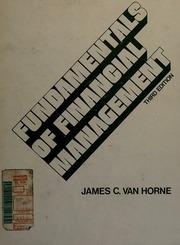Question
TRUE OR FALSE? Only the answer, no explanation is needed. Please answer in 30 minutes. Question 21 Futures Markets: Backwardation futures markets are those in
TRUE OR FALSE? Only the answer, no explanation is needed. Please answer in 30 minutes.
Question 21
Futures Markets: Backwardation futures markets are those in which spot prices are higher than
futures prices while Contango futures markets are those in which spot prices are lower than
futures prices
True
False
Question 22
Life Cycle Approach to Investing (LCAI). The LCAI views the individual as passing through a
series of stages, becoming more risk seeking in later years, the rationale being that one ages, an
individual uses up his/her human capital and have less time remaining to recoup possible
portfolio losses through increased labor supply.
True
False
Question 23
Strategic Asset Allocation (SAA) and Tactical Asset Allocation (TAA). TAA represents a
dynamic investment strategy that actively adjusts the portfolios asset allocation, shifting it
towards undervalued assets and away from overvalued assets for time periods generally spanning
one to several years. Conversely, SAA is long term.
True
False
Question 24
Futures Profitability and Zero Sum Game: The profit to a long futures contract is the spot price at
maturity minus the original futures price. The profit to a short futures contract is the original
futures price minus the spot price at maturity. When summed, the profits to the long and the short
suggest that futures contracts are a zero-sum arrangement.
True
False
Question 25
Valuation Model Consistency: Valuation model consistency refers to the proper linking of the
numerator and denominators components. For example, the discounting factors for FCFE and
FCFF are the CAPM required return and the WACC, respectively.
True
False
Question 26
FCFE. The Free Cash Flow to Equity equals FCFF minus after tax interest expenditures plus
increase in net debt. FCFE is discounted by the CAPM.
True
False
Question 27
Alternative Asset Attributes: Diversification, illiquidity, and inefficiency define a number of the
distinguishing characteristics of the alternative assets space. Alternative assets are termed alpha
investments (representing manager skill to generate a positive risk adjusted return).
True
False
Question 28
Forwards & Futures: A futures contract is similar to a forward contract, differing more
importantly in the aspects of standardization and daily marking to market, which is the process by
which gains and losses on futures contract positions are settled daily. Futures contracts can be
used for hedging or speculating.
True
False
Question 29
Two Classes of LLP Partners. The two classes of LLP partners are Equity Partners and Debt
Partners. Debt partners, while limited in their authority, are nonetheless responsible for
providing the majority of the capital investment.
True
False
Question 30
M^2 Measure of Performance. To compute the M^2 measure-of-performance, a managed
portfolio is adjusted such that the adjusted portfolio matches the volatility of the benchmark
portfolio. Because the adjusted portfolio and the benchmark have the same standard deviation, an
analyst can compare their performance simply by comparing returns.
True
False
Question 31
Option Hedge Ratio: Hedge ratios (or deltas) are one for deep out-of-the-money call options and
zero for deep in-the-money calls.
True
False
Question 33
Portfolio Constraints (PC) in Investment Policy Statements. PC can include liquidity, investment
horizon, regulations, tax considerations, and unique needs.
True
False
Question 34
Option Valuation: Option values may be viewed as the sum of intrinsic value plus time value.
The value of a call option increases if the stock price increases, the exercise price (or strike price)
decreases, the volatility increases, the time to expiration increases, the risk free interest rate
increases, and the dividend payment decreases.
True
False
Question 35
Sector Rotation (SR): One means analysts think about the relationship between industry analysis
and the business cycle is the notion of SR. The idea is to shift the portfolio more heavily into
industry or sector groups that are expected to outperform based on ones assessment of the state
of the business cycle. For instance, if one were anticipating an economic expansion, one would
focus attention on the consumer discretionary, materials, industrials, and energy sectors.
True
False
Question 36
Defined Contribution (DC) vs. Defined Benefit (DB). The two types of pension plans are DC and
DB, the later where the contributions made on behalf of the employees by the firm specifies the
retirement benefits to which the employee is entitled. The benefit formula typically takes into
account years of service for the employer and level of wages. In DC plans, the investment risk is
transferred to the employee.
True
False
Question 37
J Curves. J curves are generally associated with venture capital investments and indicate the
anticipated negative return (or cash flows) early on in its life cycle.
True
False
Question 38
Value Proposition: The consulting model value proposition suggests that a stock price will be
higher the larger the expected dividend per share (or free cash flow), the higher the market
capitalization rate (or risk), and the higher the expected growth rate of dividends (or free cash
flow).
True
False
Question 39
Credit Default Swaps (CDS). CDS are in effect, an insurance product that pays off in the event of
a trigger event (some sort of technical or real default). The protection seller receives a premium
from the protection buyer.
True
False
Question 40
European Australasia, Far East (EAFE) Index. EAFE is one of the most used indexes of non-US
stocks.
True
False
Step by Step Solution
There are 3 Steps involved in it
Step: 1

Get Instant Access to Expert-Tailored Solutions
See step-by-step solutions with expert insights and AI powered tools for academic success
Step: 2

Step: 3

Ace Your Homework with AI
Get the answers you need in no time with our AI-driven, step-by-step assistance
Get Started


